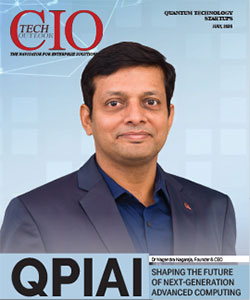IT Ministry plans for one digital ID to provide access for other IDs
CIOReviewIndia Team | Monday, 31 January 2022, 12:06 IST
 The Ministry of Electronics and Information Technology (MeitY) has proposed a new model of “Federated Digital Identities” under which a citizen’s multiple digital IDs — from PAN and Aadhaar to driving licence and passport numbers — can be interlinked, stored, and accessed via one unique ID.
The Ministry of Electronics and Information Technology (MeitY) has proposed a new model of “Federated Digital Identities” under which a citizen’s multiple digital IDs — from PAN and Aadhaar to driving licence and passport numbers — can be interlinked, stored, and accessed via one unique ID.
The ministry, according to a draft proposal reviewed by The Indian Express, has suggested that this umbrella digital identity will “empower” the citizen by “putting her in control of these identities and providing her the option of choosing which one to use for what purpose.”
The proposal is expected to soon be in the public domain and the Ministry will seek comments by February 27.
As per the proposed framework, the “federated digital identity” would also serve as a key to a registry where all different state and Central identities could be stored. Citizens can use the digital ID “for availing other third-party services through authentication and consented eKYC”.
Further, all the digital identities of a citizen can be interlinked with each other, which would eliminate the need for repeated verification process, according to the draft proposal.
The ministry has moved the proposal under the India Enterprise Architecture (IndEA) 2.0.
IndEA was first proposed and designed in 2017 “with a view to enable alignment of the IT developments with the business vision of government organisations.” The framework has since been updated.
In the 2.0 version, IndEA proposes a framework that enables public as well as private sector companies to build and design IT architecture “that can span beyond their organisational boundaries” to deliver “holistic and integrated services to the customers”.
Apart from a “federated digital identity”, the new framework has also proposed three major architectural patterns for different government agencies.
The domain architecture pattern would be most suited to be adopted by Central ministries, or by ministries which deal with concurrent or state subjects, or have substantial funding and involvement of the Central government.
The state architecture pattern would be adopted by the state governments, while a third IndEA Lite architecture pattern has been recommended for adoption by smaller departments of the Central and state governments.
The new draft framework also suggests that information technology projects which are built under the new architecture must be developed in such a way that they are interlinked and interoperable. These projects must follow the government’s open application programming interface policy, wherein the source code of the project is available for everyone to tweak and improve upon, the framework proposed.
The IndEA 2.0 report recommends a highly selective approach to the design and development of the building blocks. Only the core building blocks are proposed to be designed, developed, and managed centrally by the central or state governments. “From a governance perspective, the government plays an enabling role in respect of the remaining building blocks,” says the draft report.




